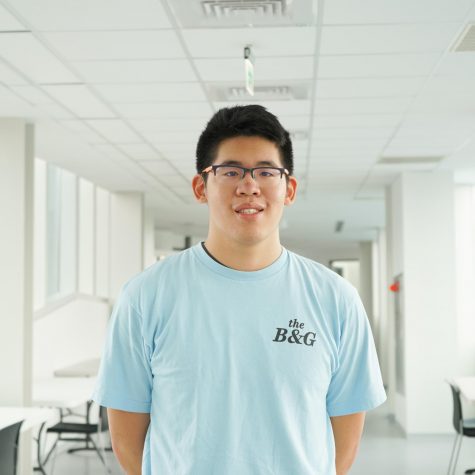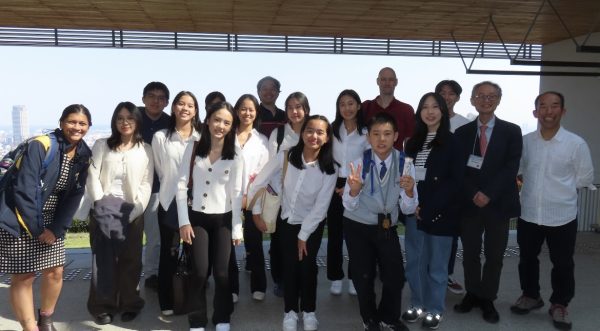William W. (’23) Publishes Paper in Journal of Food and Nutrition Research
William’s research paper can be accessed online for those interested. [PHOTO COURTESY OF WILLIAM W.].
Entropy, enthalpy and rice production — how do those relate? Junior William W. (‘23, he/him) began exploring the topic from his time in Honors Research in Chemistry class as a sophomore and continued working on the project taking AP Chemistry class as a junior. As a result, William was able to complete a research project exploring the correlation between entropy, enthalpy and rice production, and in addition, had his work published in the Journal of Food and Nutrition Research, a peer-reviewed journal by professional researchers. Submitting researched works into peer-reviewed journals by professional researchers is always difficult and a great source of pride for anyone involved in academic research.
William analyzed his topic of rice production both locally and globally, noting that rice production is an important local issue with global implications. “I realized how Taiwan is a big manufacturer in grains such as rice and I combined those two topics [entropy and enthalpy] and brainstormed from there,” he said.
According to Mr. Alex Dezieck (he/him), an upper school science teacher and one of William’s mentors throughout the project, William burned different rice samples that were in different sizes, which gave off different energy numbers. “[The energy released when burning different samples of rice] represented enthalpy. The entropy part is how spread out the particle was; were the rice full grains or fine powder?” Mr. Dezieck explained.
William’s research project is designed to explore the efficiency of energy release in different stages of the rice production process. “During the rice production process, there is a lot of milling and grinding, which expends energy. I examined different milling time ranges for the rice and concluded that with a reduction of rice over manufacturing, less energy can be used in the process,” William said. William used the concepts of entropy and enthalpy to examine the efficiency of energy use in the rice production process through the size of the grains, ranging from a powder texture to whole grains. William’s experiment was designed to seek the differences in the amount of heat that different rice entropy measures gave off as a simulation of the rice production process. By using a bomb calorimeter, he was able to determine the energy released by different rice samples based on the measured temperature change each sample produced during calorimetry after the simulated milling process.
As a result of his research, William derived that there was a lot of improvement that can be made in the rice production process; its deficiencies lead to energy loss and at a large scale, it is very significant. “I feel that it is pretty important given the food crises and hunger issues around the world,” he said
William showed his appreciation to Mr. Dezieck by saying, “Mr. Dezieck is a really helpful teacher. He worked with me even after the class finished to provide help. He is really supportive and overall inspiring”. In addition to Mr. Dezieck and other faculty members at TAS, William also worked with a professor at Kaohsiung Medical University to help his writing be more professional.
William was happy but not very surprised when he received the news that his paper was going to be published. “The committee told me that they liked it when I submitted it [for review]. This success inspires me to do more research in the future,” he said.

As a senior at Taipei American School, James has had a prolonged passion for collecting information via the newspaper. He enjoys listening to music (usually...

![William's research paper can be accessed online for those interested. [PHOTO COURTESY OF WILLIAM W.].](https://blueandgoldonline.org/wp-content/uploads/2022/05/Screen-Shot-2022-05-24-at-9.11.11-PM-900x406.png)
![Sofia Valadao [Erin Wu/The Blue&Gold]
Erin Wu [Annabelle Hsu/The Blue&Gold]](https://blueandgoldonline.org/wp-content/uploads/2025/05/erin-sofia-pic-600x450.png)
![Dr. Simeondis, Mr. Anderson. [Annabelle Hsu/The Blue&Gold]](https://blueandgoldonline.org/wp-content/uploads/2025/05/teachers-600x338.jpg)
![[PHOTO COURTESY OF UNCULTURED, JUNIPER AND CO.]](https://blueandgoldonline.org/wp-content/uploads/2025/05/student-businesses-600x338.png)
![Photo of the girl's varsity badminton team [PHOTO COURTESY OF TAS ATHLETICS]](https://blueandgoldonline.org/wp-content/uploads/2025/05/BadmintonTeam-04839-600x338.jpg)
![The Institute for Speech and Debate, now based all across the east coast of the US. [PHOTO COURTESY OF MR. WILLIAMS]
Mr. Morris' various ceramic artwork. [PHOTO COURTESY OF MR. MORRIS]](https://blueandgoldonline.org/wp-content/uploads/2025/05/Untitled-design-1-600x459.png)


![[PHOTO COURTESY OF PIXABAY]](https://blueandgoldonline.org/wp-content/uploads/2025/03/white-18227_1280-600x402.jpg)

![[PHOTO COURTESY OF PIXABAY]](https://blueandgoldonline.org/wp-content/uploads/2025/03/fire-6706674_1280-600x400.jpg)